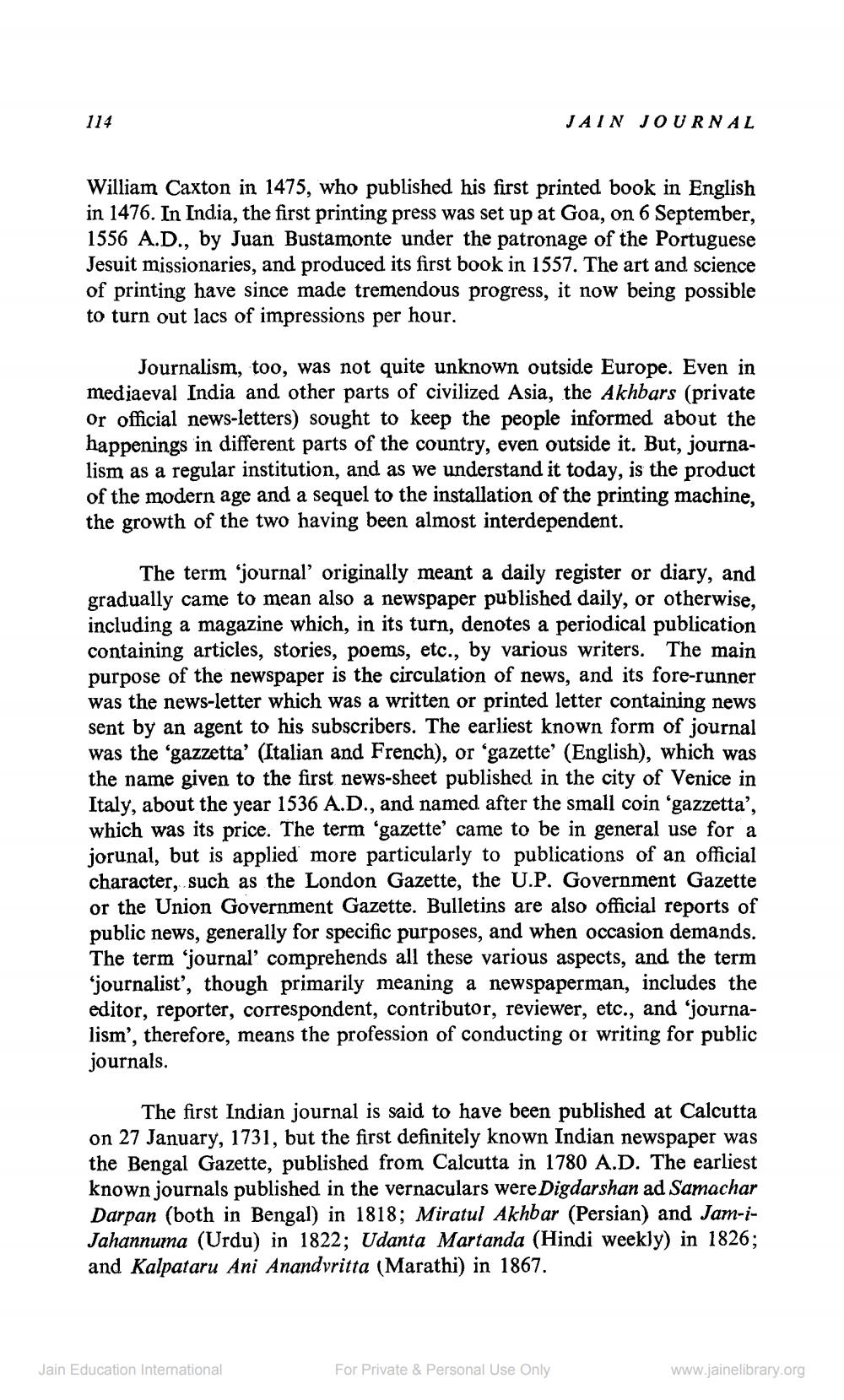Book Title: Jain Journal 1978 04 Author(s): Jain Bhawan Publication Publisher: Jain Bhawan Publication View full book textPage 8
________________ 114 William Caxton in 1475, who published his first printed book in English in 1476. In India, the first printing press was set up at Goa, on 6 September, 1556 A.D., by Juan Bustamonte under the patronage of the Portuguese Jesuit missionaries, and produced its first book in 1557. The art and science of printing have since made tremendous progress, it now being possible to turn out lacs of impressions per hour. JAIN JOURNAL Journalism, too, was not quite unknown outside Europe. Even in mediaeval India and other parts of civilized Asia, the Akhbars (private or official news-letters) sought to keep the people informed about the happenings in different parts of the country, even outside it. But, journalism as a regular institution, and as we understand it today, is the product of the modern age and a sequel to the installation of the printing machine, the growth of the two having been almost interdependent. The term 'journal' originally meant a daily register or diary, and gradually came to mean also a newspaper published daily, or otherwise, including a magazine which, in its turn, denotes a periodical publication containing articles, stories, poems, etc., by various writers. The main purpose of the newspaper is the circulation of news, and its fore-runner was the news-letter which was a written or printed letter containing news sent by an agent to his subscribers. The earliest known form of journal was the 'gazzetta' (Italian and French), or 'gazette' (English), which was the name given to the first news-sheet published in the city of Venice in Italy, about the year 1536 A.D., and named after the small coin 'gazzetta', which was its price. The term 'gazette' came to be in general use for a jorunal, but is applied more particularly to publications of an official character, such as the London Gazette, the U.P. Government Gazette or the Union Government Gazette. Bulletins are also official reports of public news, generally for specific purposes, and when occasion demands. The term 'journal' comprehends all these various aspects, and the term 'journalist', though primarily meaning a newspaperman, includes the editor, reporter, correspondent, contributor, reviewer, etc., and 'journalism', therefore, means the profession of conducting or writing for public journals. The first Indian journal is said to have been published at Calcutta on 27 January, 1731, but the first definitely known Indian newspaper was the Bengal Gazette, published from Calcutta in 1780 A.D. The earliest known journals published in the vernaculars were Digdarshan ad Samachar Darpan (both in Bengal) in 1818; Miratul Akhbar (Persian) and Jam-iJahannuma (Urdu) in 1822; Udanta Martanda (Hindi weekly) in 1826; and Kalpataru Ani Anandvritta (Marathi) in 1867. Jain Education International For Private & Personal Use Only www.jainelibrary.orgPage Navigation
1 ... 6 7 8 9 10 11 12 13 14 15 16 17 18 19 20 21 22 23 24 25 26 27 28 29 30 31 32 33 34 35 36 37 38 39 40 41 42 43 44 45 46 47 48 49 50 51 52 53
